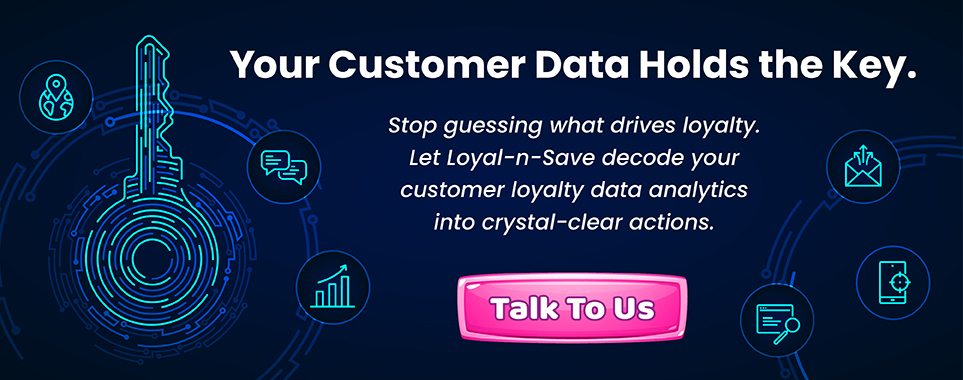Complete Your Loyalty Program with Deep Data Analytics

The marketplace today demands more than just a transactional exchange for repeat business. True competitive advantage lies in the profound understanding of your customers, enabling you to build enduring relationships. This is where deep data analytics become crucial, transforming standard loyalty programs into powerful engines for customer retention and growth. The future of impactful loyalty is dependent on merging your program with data strategies, ultimately maximizing the inherent customer lifetime value within your audience.
“According to World Economic Forum, 60% of organizations believe big data and analytics skills are getting more important.”
The Importance of Deep Data Analytics in Loyalty Programs
Moving beyond transactional rewards requires a fundamental shift in perspective. It’s not just about what customers buy, but why, how often, and what might trigger them next. This is the domain of customer loyalty data analytics, providing the granular insights needed to elevate your program from a simple tally of points to a strategic asset. Here’s why it’s indispensable:
- Understanding Patterns of Customer Loyalty: Deep data dives beneath the obvious, revealing structured behaviors and preferences that define true loyalty. It helps identify not just who your repeat purchasers are, but the specific actions and interactions that strengthen their commitment.
- Elevating the Customer Experience: Generic rewards and communications fall flat. By understanding individual customer journeys and pain points through data, you can tailor experiences that resonate, making each interaction feel personal and valued.
- Extending Customer Lifetime Value: Loyal customers are inherently more valuable. Loyalty program analytics empower you to identify high-potential customers, understand what drives their long-term engagement, and implement strategies to nurture those relationships, maximizing their overall contribution to your business.

Interesting Read: How to Calculate Customer Lifetime Value to Maximize ROI!
Benefits of Customer Loyalty Data Analytics
The integration of robust analytics into your loyalty framework isn’t just a nice-to-have; it’s a strategic imperative. Here are some key advantages you can unlock:
- Hyper-Personalization: Imagine offering a relevant reward or a perfectly timed communication based on a customer’s past behavior and stated preferences. Customer loyalty insights enable this level of personalization, making your loyalty program feel uniquely tailored to everyone.
- Predictive Customer Behavior: By analyzing historical data, you can anticipate future customer actions, such as potential churn or upcoming purchase interests.
- Precision Segmentation and Targeting: Not all loyal customers are the same. Data analytics allows you to segment your audience based on various factors – purchase history, engagement levels, demographics – enabling you to deliver highly targeted campaigns and rewards that resonate with specific groups.
- Real-Time Decision Making: Access to up-to-the-minute data allows for agile adjustments to your loyalty program. Whether it’s tweaking a campaign based on early results or addressing immediate customer feedback, real-time insights empower swift and effective action.
- Smarter Marketing Spend Allocation: Instead of broad, untargeted marketing efforts, data analytics pinpoints which loyalty initiatives and communication channels yield the highest returns. This ensures your marketing budget is invested wisely, maximizing impact on customer retention and engagement.
FACT: 50% of consumers say their primary reason for joining a loyalty program is to earn rewards on everyday purchases.
The Metrics That Matter: 6 Customer Loyalty Data Analytics You Need to Track
To truly understand the pulse of your loyalty program and your customer base, certain metrics stand out. Tracking these provides actionable insights into performance and areas for optimization:
1. Net Promoter Score (NPS): This measures customer advocacy by asking how likely customers are to recommend your brand. A high NPS indicates strong loyalty and potential for organic growth. Understanding who your promoters and detractors are through data allows for targeted engagement strategies.
2. Customer Satisfaction Score (CSat): Measuring immediate customer satisfaction with specific interactions or experiences provides valuable feedback on what’s working and what needs improvement within your loyalty program and overall customer journey.

3. Customer Retention Rate (CRR): This crucial metric tracks the percentage of customers who remain loyal over a specific period. A low CRR signals potential issues with your program or overall customer experience, highlighting the need for deeper data analysis to identify the root causes.
4. Customer Effort Score (CES): CES measures the ease of a customer’s experience when interacting with your brand, including aspects of your loyalty program. A high CES can indicate friction points that lower loyalty, making it a vital metric to monitor and address.
Interesting Read: Loyalty Programs: A Deep Dive into Traditional and Digital Approach
5. Repeat Purchase Rate (RPR): This indicates the percentage of customers who make more than one purchase. A healthy RPR is a direct indicator of engagement and the stickiness of your offerings, often influenced by the perceived value of your loyalty program.
6. Reviews and Customer Feedback: While qualitative, analyzing customer reviews and feedback (both positive and negative) provides invaluable context for quantitative data. Identifying recurring themes and sentiments can uncover hidden opportunities for program enhancement and loyalty building.
Steps to Leverage Data Analytics for Loyalty Program Optimization
Turning raw data into actionable improvements requires a strategic approach. Here’s how you can leverage customer loyalty analytics to optimize your program:
1. Define Objectives and KPIs: Clearly outline what you want your loyalty program to achieve (e.g., increased repeat purchases, higher CLTV, improved advocacy) and identify the Key Performance Indicators (KPIs) you’ll use to measure success.
2. Implement Robust Data Collection Systems: Ensure you have the tools and processes in place to capture relevant data across all customer touchpoints, from website activity and purchase history to engagement with your loyalty program.
3. Segment Customers: Utilize data to segment your customer base into meaningful groups based on behavior, preferences, and value. This allows for more targeted and effective loyalty initiatives.
4. Analyze Program Performance: Regularly review your key metrics to understand what’s working, what isn’t, and identify areas for improvement within your loyalty program structure and rewards.
5. Apply Predictive Analytics: Leverage historical data to forecast future customer behavior, enabling proactive interventions to boost loyalty and mitigate potential churn.

6. Personalize Rewards and Communication: Use data-driven insights to tailor rewards, offers, and communications to individual customer preferences, making your loyalty program feel more relevant and valuable.
7. Monitor and Measure Results: Continuously track the impact of your optimization efforts on your defined KPIs. This process ensures your loyalty program remains effective and aligned with your business goals.
8. Ensure Compliance and Data Privacy: Always adhere to data privacy regulations and be transparent with your customers about how their data is being used to enhance their loyalty experience.
You May Like To Read: Loyalty Programs Meet Automation: The Ultimate Sales Tool for Modern Businesses
Guiding Principles: Best Practices for Using Customer Loyalty Analytics Data
To truly harness the power of customer loyalty data analytics, keep these best practices in mind:
- Let customer retention guide your program: While acquisition is important, focus your loyalty efforts and data analysis on nurturing existing customers and maximizing their long-term value.
- Create personas based on customer needs: Use data to develop detailed customer personas that represent different segments of your loyal base. This helps you empathize with their needs and tailor your program accordingly.
- Map out the customer journey: Understand all the touchpoints your loyal customers have with your brand and identify opportunities to enhance their experience through data-driven insights.
- Track program effectiveness: Regularly evaluate whether your loyalty program is achieving its intended goals and use data to identify areas where it can be improved for better results.
The Verdict: Data is the Loyalty Game-Changer
In conclusion, while the fundamental principles of rewarding loyalty remain timeless, execution has evolved. Deep data analytics is no longer an optional add-on; it’s the very foundation upon which truly successful and impactful loyalty programs are built. By moving beyond surface-level rewards and embracing the rich insights that data provides, businesses can build stronger customer connections, drive greater lifetime value, and ultimately, stand out in a crowded marketplace. The missing piece to unlocking the full potential of your loyalty program isn’t just more rewards – it’s smarter, data-driven strategies.
Posted on Jun 17, 2025








